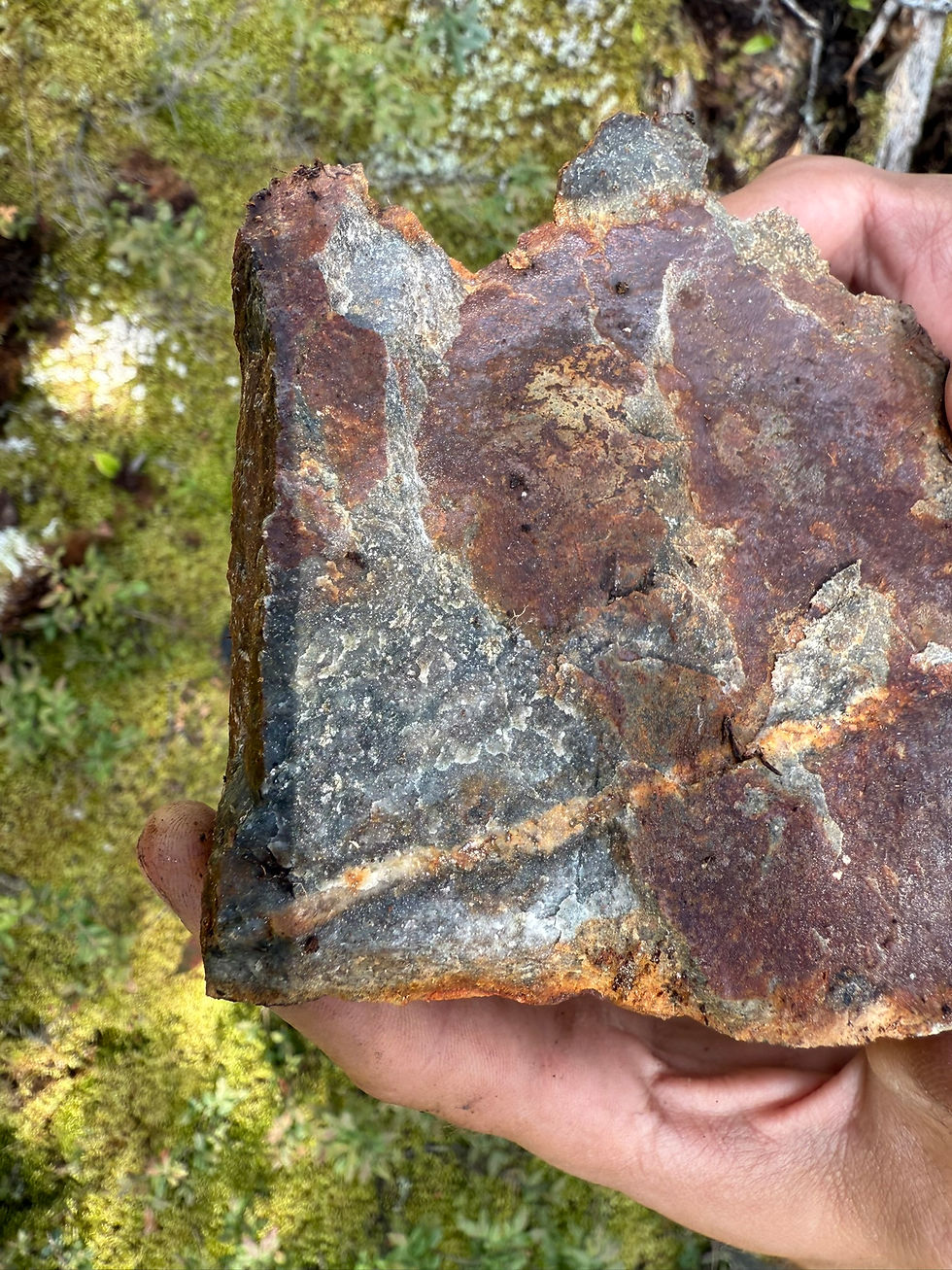CHF Byte-sized Reviews - Athena Gold Corporation: Till Sampling 101
- John A
- Oct 3
- 3 min read
By: Stephen Mlot, P.Eng.
I have seen many companies, including CHF clients, reporting on Till Sampling Programs. This geochemical exploration technique has proven to be an efficient, cost-effective, and reliable tool for early-stage exploration, particularly in regions with a glacial history, such as the Canadian North.
Specifically targeting the “C-horizon,” which is the deepest soil layer, consisting of unaltered or minimally altered material derived from local bedrock sources, and may be less affected by biological or chemical processes than surface and upper soil horizons. Samples are typically obtained from hand-dug pits, by using hand augers, or by drilling in deeper soil areas. Geochemical anomalies are determined from the presence of indicator minerals, gold grain counts, or multi-element analysis. A geochemical map highlights target areas and reveals the source and direction of mineralized material dispersion, providing valuable insights for exploration. These maps enable the exploration team to identify priority up-ice targets that suggest potential mineral deposits, such as gold, base metals, or diamonds, and pinpoint areas for further exploration.
CHF Client Athena Gold Corporation (CSE: ATHA) (OTCQB: AHNRF) recently announced results from its 2025 summer till program completed at its flagship Laird Lake gold project, located in the Red Lake Gold District. (Read here)
Athena completed a till sampling survey consisting of 1,899 samples. In the central portion of the property, samples were collected on 100-metre-spaced north-south and east-west lines, while in the western portion the spacing was widened to 200 metres. Given the thin overburden depths, samples were collected with hand augers to a maximum depth of 3.0 metres. Actual depths ranged from 0–250 cm, with an average of 27 cm, and sample weights ranged from 0.28 kg to 2.16 kg, averaging 1.04 kg. Certified reference material (CRM) and duplicate samples were inserted into the sequence in the field to ensure Quality Assurance/Quality Control (QA/QC). All samples were delivered to the laboratory for preparation and analysis. Athena employed a multi-element analytical approach (weighted sum of Au[x5]-Ag-As-Bi-W) that generates a geochemical signature consistent with Madsen-style gold mineralization and representative of gold mineralization elsewhere in the Red Lake district.

Results from the program have highlighted at least four distinct zones of gold anomalism, not associated with any historical occurrences, representing new opportunities to make near-surface discoveries. The newly named Nemo, Bounty, Hugo, and Chungus zones happen to occur in areas with very thin overburden. The till material sampled likely underwent minimal glacial displacement from any surface mineralization near the new anomalies. This means that they should be able to ground truth these targets quickly and at low cost to finalize drill targets for the proposed winter drilling campaign. The Bounty anomaly is coincident with areas of known gold showings, most notably, the 373 g/t Au surface grab sample reported last year by Athena and is proximal to the Balmer-Confederation unconformity that hosts several high-grade, narrow-vein deposits in the Red Lake Gold Camp. Interestingly, the Bounty Zone aligns quite well with the Faulkenham Southwest and Southeast targets outlined in till sampling by West Red Lake Gold Mines in an area of their property where there is almost no previous exploration work. Laird Lake is believed to be the faulted-away extension of the West Red Lake mineralization.

The western anomalies, Nemo, Hugo, and Chungus, appear broader and less nuggety (i.e. more disseminated), suggesting a differing style of mineralization compared to the narrow high-grade targets at the Bounty zone.

On the back of these till results, Athena has materially increased its Laird Lake project to 7,457 hectares from 5,155 hectares through staking another 2,302 hectares. The project now spans ~20 km of highly prospective ground. Diamond drilling is scheduled to begin in Q1 of 2026.
-01.png)







Comments